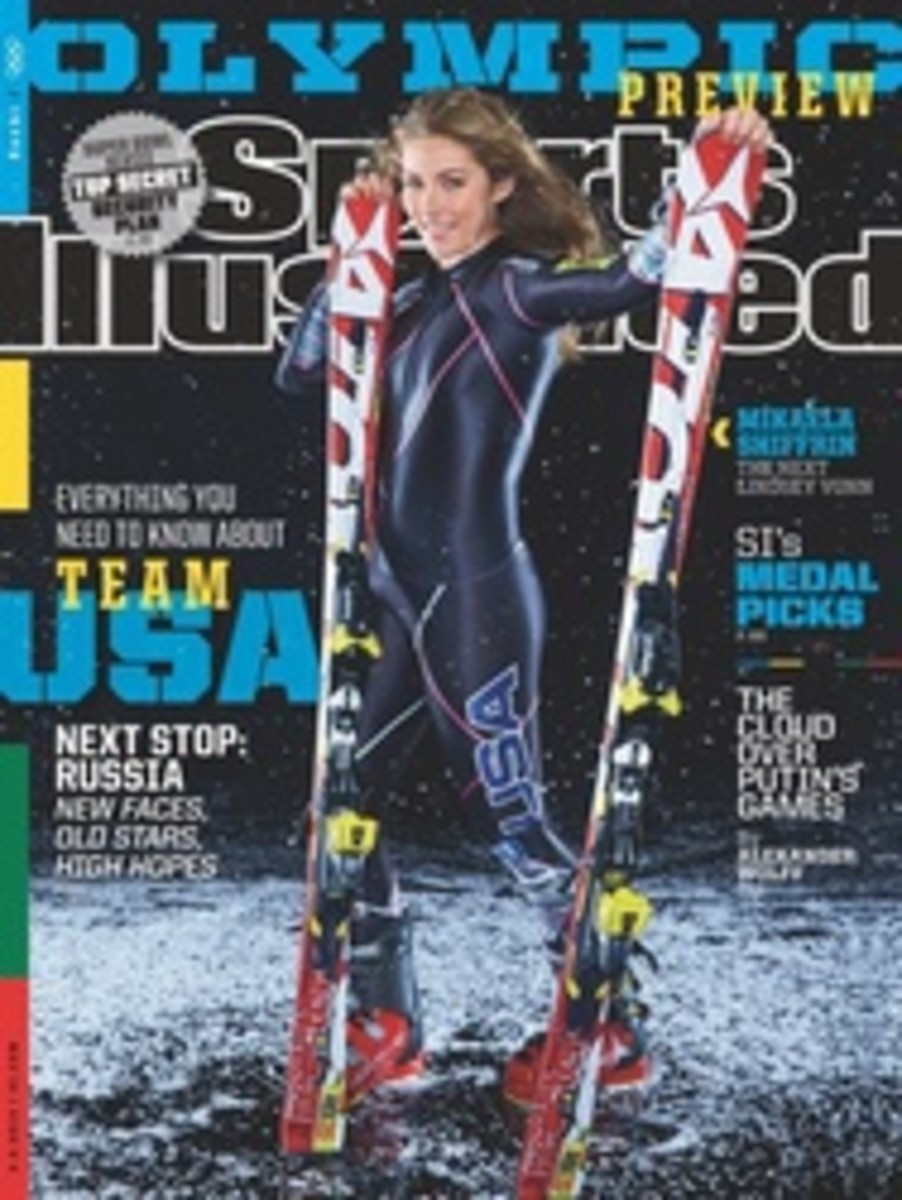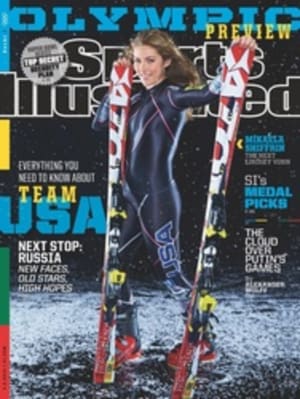
PROTECT THIS HOUSE
SECURITY OFFICIALS working on high-profile events on the scale of Super Bowl XLVIII face an increasingly long list of concerns. Where once they focused on preventing conventional acts of violence (think: the Olympic Park bombing at the 1996 Summer Games), now they must also consider more unconventional threats, such as biological, chemical, radiological and even nuclear weapons. "You have Super Bowl security before 9/11," says one of more than a dozen security officials who spoke to SI about current and previous plans, "and then after 9/11."
It would be impossible to catalog all the protective measures that will be in place when the Broncos and the Seahawks kick off in East Rutherford, N.J. After all, secrecy is a hallmark of Super Bowl security, with various agencies working, cloak-and-dagger, to keep specifics shrouded—sometimes even from one another. "You don't tell everybody your game," says another official with decades of federal security experience.
This much we do know: The New Jersey State Police will serve as the lead agency on security at MetLife Stadium. That outfit has decades of experience at Giants and Jets games (and also oversaw World Cup matches in 1994, including a high-profile semifinal). But the Super Bowl presents a unique challenge, and Col. Rick Fuentes, superintendent of the NJSP, admits that planning has been "a learning process"—one that has involved collaborating with roughly 100 local, state and federal agencies, some of which have been preparing for nearly four years.
Of all the possible threats, the majority of those officials who spoke with SI are most concerned about the potential detonation of an improvised explosive device. "The process has holes in it," one official said of existing Super Bowl screening procedures. Another major concern is the possibility of a shooter taking aim at fans outside the stadium. In 2008, at Super Bowl XLII in Glendale, Ariz., a 35-year-old man with an assault rifle and 200 rounds of ammo drove to within striking distance of University of Phoenix Stadium, bent on shedding "the blood of the innocent" because he had been denied a liquor license for a bar he wanted to open. He ultimately changed his mind and turned himself in to authorities, but according to one SI source, the NFL didn't even know about that threat until the morning after the game.
Jeffrey Miller, the NFL's chief security officer, is confident that the security measures in place in New Jersey will snuff out any such incident. "All of the things that you would look at as vulnerabilities someone might try to exploit are things that are factored into [our] plan," he says.
But therein also lies a concern. As security experts who spoke to SI made clear: The greatest threats are the ones that haven't been anticipated.
[originallink:10896631:1012596]
The NFL and the New Jersey State Police have been reticent about revealing specific measures taken to protect fans. But SPORTS ILLUSTRATED obtained details through interviews with more than a dozen law enforcement personnel and security experts who are working on this event and who have worked past Super Bowls. Here's a sketch of what you can expect at MetLife Stadium on Feb. 2.
ON THE GROUND
Observation Towers
Twenty-two-foot-tall manned posts—provided by U.S. Customs and Border Protection—are equipped with security cameras and air-quality monitors to detect chemical and radiological substances.
Armored Rescue Vehicles
Threatening-looking Ballistic Engineered Armored Response Counter Attack Trucks (or BearCats) are mobilized in key areas inside and outside MetLife for use by SWAT teams in victim-recovery situations.
FCC Enforcement Vehicles
Antennaed patrol vehicles employ computer technology to detect illegal frequencies—both the kind used to illegally broadcast the game and the type used to wirelessly detonate explosive devices.
Backscatter Vans
White box vans contain X-ray machines that can see through clothing, into vehicles and into some buildings to check for plastic or metal weapons, but particularly for explosives or nuclear weapons.
AROUND THE STADIUM
Fencing
Nearly two miles of eight- to 10-foot-tall chain-link fence creates an exclusionary zone extending 300 feet from the stadium's exterior. Typically operational two to three days before the Super Bowl.
Marine Vessels
Boats patrol backwaters and bridges near the stadium (and checkpoints are in place) in order to prevent attacks.
Weather Preparedness
In the event of inclement weather, 800 to 900 snowplows are available—or the game could be moved to Friday, Saturday or Monday. Officials also have a plan for handling a power blackout.
Vehicle and Cargo Inspection Stations
All transportation and deliveries entering the exclusionary zone must be on a manifest; they're screened for weapons and drugs, as well as biological, chemical, nuclear and radioactive materials. Cleared vehicles are escorted onward.
Parking
The exclusionary zone cut MetLife's car capacity by more than half (to some 12,000 spaces, which must accommodate 450 buses too). Vehicles allowed to park cannot leave until after the game. Individuals arriving by train or bus are screened by TSA and air marshals before boarding.
IN THE SKIES
Helicopters
Provide surveillance, enforce a flight restriction zone and carry equipment capable of seeing in low light and of detecting heat. Black Hawks and state choppers are available to drop in SWAT teams.
Fighter Jets
Military aircraft wait on standby at nearby bases and can be on site within minutes.
Drones
Used by federal authorities for surveillance, the unmanned devices monitor MetLife and its surroundings, especially the swampy Meadowlands.
Temporary Flight Restriction Zone
The FAA establishes a ring around the area within 30 nautical miles of MetLife, up to 18,000 feet in altitude; here aircraft must I.D. themselves and state their flight mission. The ring's inner eight-mile radius is off-limits to all but preapproved aircraft.
OFF-SITE
Intelligence Operations Center
Undisclosed facility, five to 10 miles away, where federal law enforcement officials check security intelligence worldwide—a counterterrorism database, plus info from the NSA, TSA, FBI, and Customs and Border Protection—for signs of threats.
Decontamination Site
In the event of a biological or chemical attack, federal Hazard Mitigation, Material and Equipment Restoration teams deliver victims to these heated tents to be decontaminated and to receive medical care (or to be quarantined).
Secaucus Junction Rail Station
As many as 20,000 people are expected to use this train station on game day. Local police, firefighters and emergency management officials are trained to respond to an attack on the railway.
Electricity and Water
The areas where both of these utilities tie into MetLife fall within the 300-foot exclusionary zone, but feeder plants for both are reinforced with beefed-up security.
Joint Operations Center & Public Safety Command Post
The JOC, an interagency nerve center miles away from MetLife and run by the FBI, has camera views on the stadium and throughout New Jersey; this is where responses to threats and incidents are coordinated. Those first responders depart from the Command Post, located within blocks of the stadium.
METLIFE MEASURES
Security Cameras
Elaborate network of hundreds of devices inside the stadium and in key places outside (parking lots, perimeter roads). All are monitored at Intelligence Operations Center and Joint Operations Center.
Facial Recognition Software
Cross-checks faces against federal directory, including highly classified U.S. counterterrorism database with info on known or suspected terrorists. Pictures of suspicious attendees (fans climbing fences, photographing security cameras) are added to this database.
Intelligent Video Software
I.D.'s suspicious movement—a bag left unattended or a person walking away quickly from such an object—for potential bombs and alerts law enforcement. Similar software spots likely suicide bombers based on clothing and mannerisms.
K-9 Units
Dogs and their handlers search outside MetLife for drugs, weapons and explosives on game day—that after an extensive facility sweep at least 24 hours before kickoff.
Protesters
Trained teams are equipped to easily cut handcuffs and chains off protesters who attach themselves to the exclusionary zone fence. Organizers of past Super Bowls have met beforehand with reps for potential demonstrators, such as the Teamsters and the Occupy movement.
Stadium Evacuation
Law enforcement officials have computer models indicating how long it would take to evacuate any seat and where that seat's ticket-holder would be moved to shelter-in-place. Stadium personnel are trained to execute such an evacuation.
Chemical, Biological and Radiological Air Monitors
Placed inside and outside the stadium, and along nearby streets, these devices alert law enforcement if abnormal substance levels are detected.
Emergency Mobile Trauma Unit
Located inside MetLife, this 43-foot-long trailer has seven critical-care beds staffed with emergency physicians and nurses, plus an adjoining surgical suite.
Sniper Posts
Counter-snipers using high-powered rifles man posts throughout MetLife, with teams of two dividing the stadium into quadrants. Gunners don't look into their rifles' sights unless a threat has been I.D.'d.
Security Screening
Select high-level officials aside, anyone entering MetLife must pass through one of 130 metal detectors staffed by law enforcement officials (not to mention X-ray machines, pat-down attendants and the K-9 teams).
FACES OF THE GAME
Expert Scientists
Biologists, chemists and nuclear scientists at the JOC can test substances in a mobile laboratory. Nuclear Incident Response teams are available with aircraft on standby to deliver any substance to a national lab.
Hazardous Materials and Bomb Squads
Teams of local and federal personnel (uniformed and plainclothes) carrying handheld meters discreetly check for and respond to biological, chemical, explosive and radioactive threats.
Stadium Staff
Anyone working inside the exclusionary zone has undergone an extensive background check and wears a badge announcing his or her security clearance level. Only a select few officials are cleared to go anywhere at any time.
National Guard
Soldiers can be called in for a mass casualty incident, such as a bombing. Emergency-surge-capacity studies were conducted to determine how many victims local hospitals can treat.
SWAT Teams
Special tactical units respond to violent threats and are trained to handle simultaneous attacks, such as at hotels. Hostage and crisis negotiators are also on hand.
Plainclothes Law Enforcement
Undercover personnel—dressed like fans, carrying firearms—are scattered throughout the stadium, relaying potential threats to law enforcement centers.
Undercover Counterfeit Teams
Dozens of plainclothes law enforcement officers, working with the NFL, have been trained to spot fraudulent merchandise and tickets.
Undercover Vice Teams
Plainclothes officers target prostitution and human trafficking. A cyber crimes team also monitors both on the Internet.
SUPER STATS
$11 MILLION
Approximate amount allocated by the NFL for Super Bowl XLVIII security preparations.
400,000
People expected to visit the area for the game.
20,000
People who will undergo background checks.
3,000
Private security guards and personnel, roughly, hired to work the game.
700
New Jersey state troopers who will be utilized.
27
Subcommittees that worked on planning SBXLVIII, ranging from security intelligence to traffic.
PHOTO ILLUSTRATION
Illustration by GUY STAUBER
THIRTY ONE ILLUSTRATIONS
Illustrations by JASON LEE

